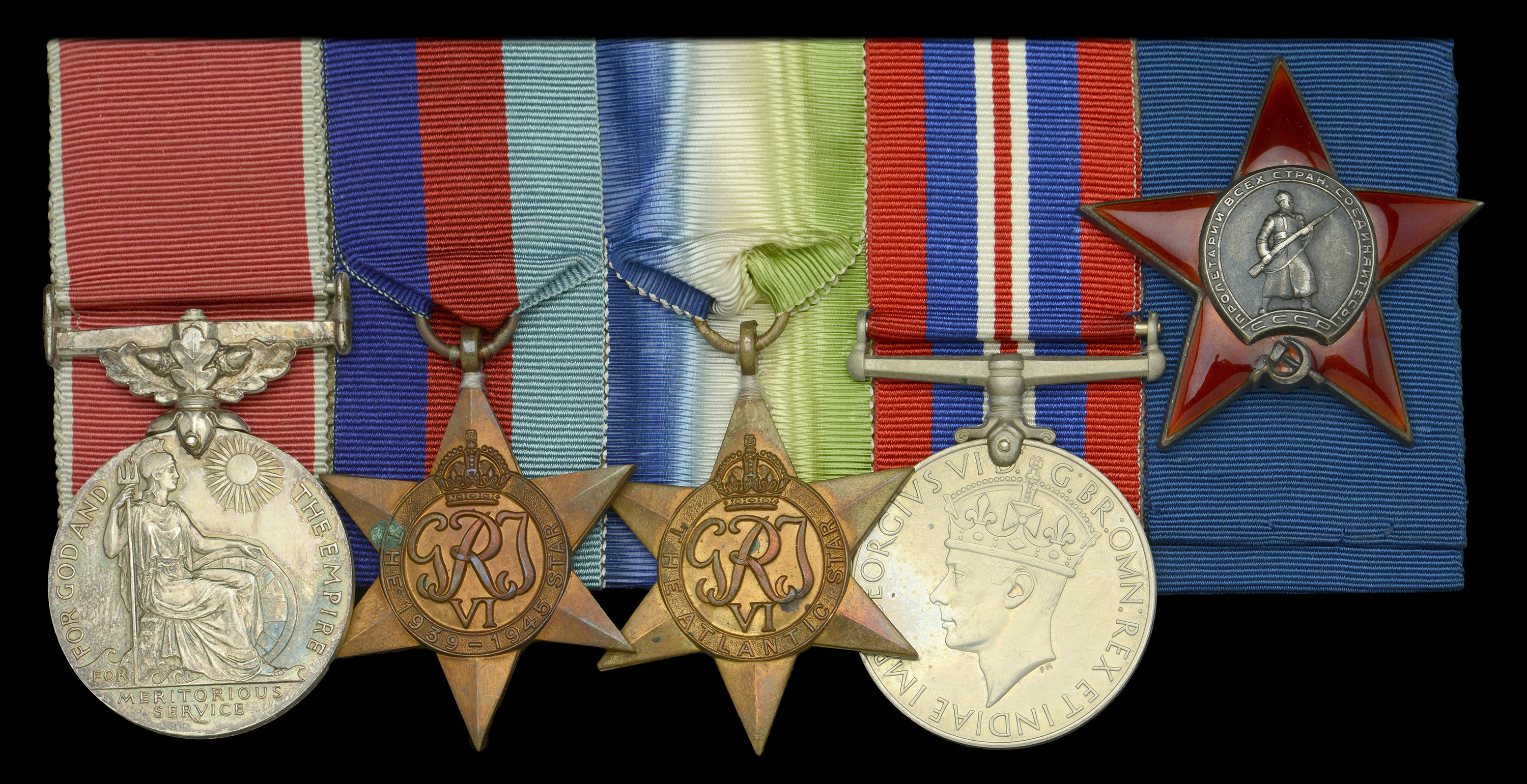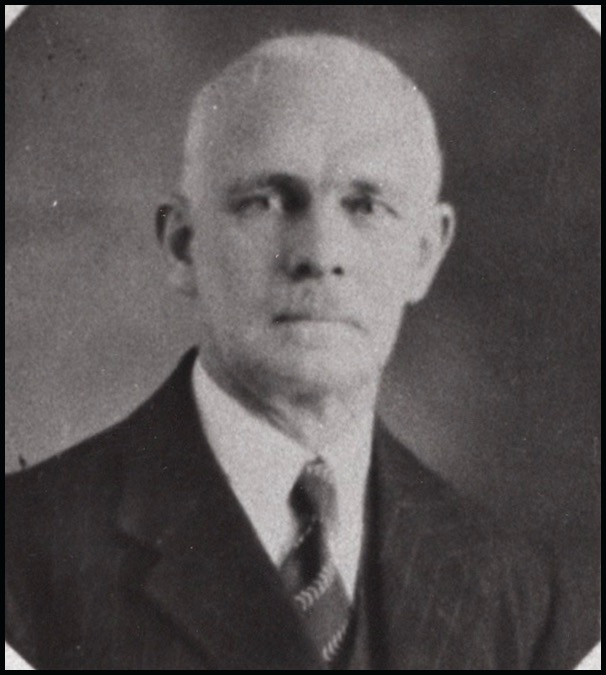The rare Arctic convoy PQ-17 B.E.M and Soviet Red Star group of five awarded to Chief Steward R. Quick, Merchant Navy, who survived the loss of the Empire Byron in PQ-17 in July 1942, and an inquisitive U-boat officer who suspected he was the ship’s Master British Empire Medal, (Civil), G.VI.R., 1st issue (Robert Quick); 1939-45 Star; Atlantic Star; War Medal 1939 -45; U.S.S.R., Order of the Red Star, the reverse officially numbered, ‘70811’, mounted for display, extremely fine (5) £1,200-£1,600 --- Importation Duty This lot is subject to importation duty of 5% on the hammer price unless exported outside the UK --- --- Provenance: Spink, November 2000. Approximately 20 Soviet Red Stars were awarded to Allied personnel for the 1939-45 War, six of them to members of the Merchant Navy. B.E.M. London Gazette 1 January 1943. The original recommendation states: ‘Chief Officer Prance and Steward Robert Quick were shipmates in a vessel which made three voyages to Russia in the Empire Byron. On her last voyage she was subjected to constant air and sea attack. Despite his previous experiences on the North Russian route, Steward Quick re-engaged in this vessel for a further voyage and faced unflinchingly all dangers and hazards.’ Soviet Red Star London Gazette 17 November 1942: ‘In recognition of gallantry in the convoying of ships to northern ports of the Soviet Union.’ Robert Quick was born in St. Ives, Cornwall on 4 May 1881, and was thus aged 61 when he signed on for his voyage in the S.S. Empire Byron on the Arctic run. Unfortunately for him, it was in the ill-fated Arctic convoy PQ-17. Carrying 3,500 tons of military stores, the Empire Byron sailed with the convoy from Reykjavik on 27 June 1942 and, following receipt of the notorious signal for the convoy to ‘scatter’ on 4 July, altered course by 20 degrees to veer away from the main body. At 0827 hours on the 5th, Kapitänleutnant Bielfeld of the U-703 put a torpedo into the Empire Byron’s main engine room, causing a between decks explosion which trapped a dozen Gunners below. The crew abandoned the sinking ship and under the orders of Captain Wharton concentrated in two boats, one of which had an engine. The officers discarded uniform insignia indicating their rank as the Germans would be sure to seek out the ship’s Master and no doubt take him prisoner aboard the U-Boat. Among those compelled to discard such insignia was John Rimington, a Captain in the R.E.M.E., who was to have advised the Russians on their new Churchill tanks. He remained, however, resplendent in a pure white duffel coat. Meanwhile, Empire Byron’s boiler exploded, tearing a gaping hole in the hull. Water then cascaded in and the ship sank with the loss of 18 gunners and ratings. Bielfeld now gave orders for U-703 to surface and closed on the two lifeboats. According to David Irving’s The Destruction of Convoy P.Q. 17, ‘A tall blond officer,’ accompanied by a German seaman in ‘polished leggings toting a machine-gun,’ then descended on to the U-boat’s deck, and began berating the British seamen who were struggling with unfamiliar oars. As they neared the submarine, the German Officer asked, “Why are you Fighting? You aren’t Communists are you? So why do you risk your lives to take tanks to the Bolsheviks? Who is your Captain?” Nobody stirred or answered, and, as related in the same book, the blond ‘German’s eyes fell on the rather distinguished-looking Chief Steward [Quick], but he hastily said he was not the Captain; finally, the officer saw Captain Rimington, and told him to step on to the submarine’s deck; the army captain’s protests went unheeded, and he was taken down below. At the same time, the lifeboats were handed tins of biscuits and apple-juice, and a piece of sausage. “How far is the nearest land?” asked Captain Wharton. “About 250 miles,” answered the blond officer. A klaxon sounded within the submarine, and she submerged, taking the captured Briton with them.’ Thus, cast adrift, 61-year-old Quick subsequently endured the following ordeal, as detailed by Captain Wharton in his official report: ‘We rowed to the S.E. throughout the afternoon of the 6th until the men became exhausted and then at about 1900 hours we took the other lifeboat in tow and started the motor, steered S.E. and making about four knots. A little before 1900 we saw a submarine on the surface astern signalling to a single aircraft which was circling overhead, but neither of them took any notice of us. Our compass was of little use to us, but we had the sun throughout the 24 hours and were able to steer by it and make a good course. We sighted one German plane on the 7th and also a steamer which was on fire and abandoned, but sighted nothing further until 10th when we sighted the corvette Dianella steaming towards us. Her crow’s nest look-out had sighted our red sails, and we were picked up about 1320 on 10th in position 73.48 N. 41.21 E., having been in the boats for five and a half days, and covering 250 miles towards the land. We remained on board the Daniella and landed at Archangel on 16 July.’ Sold with three original Soviet Red Star membership booklets, one of them with a portrait photograph, the other two with annual coupons dated 1942-46 [for annuity?], together with damaged card box of issue for B.E.M.









